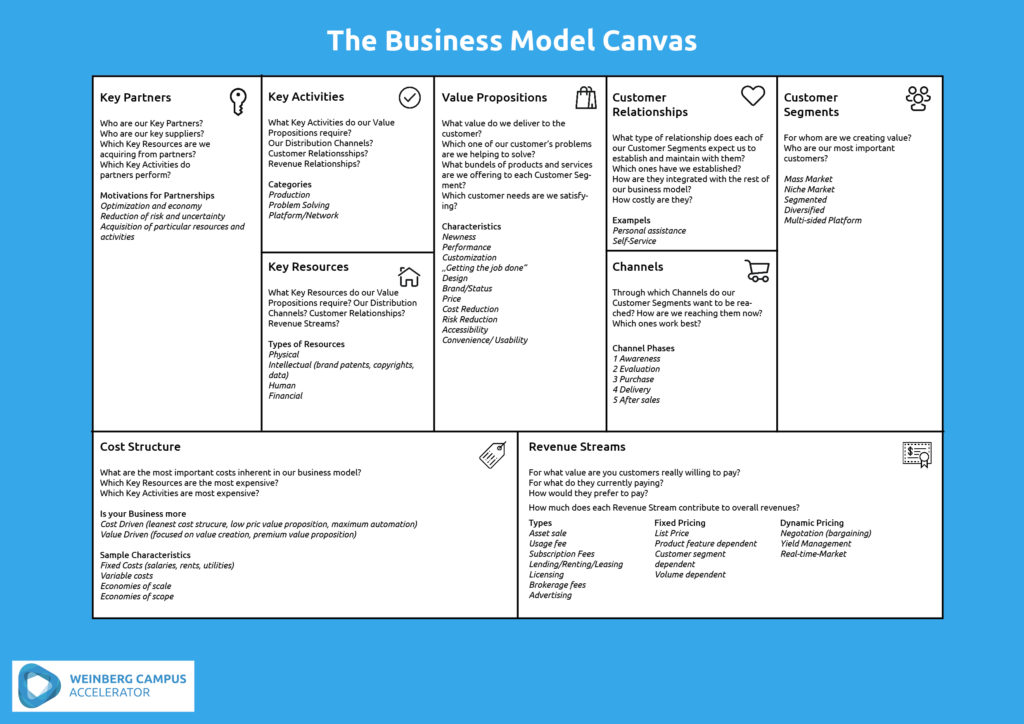
How to Start a Startup: 6 Things You Need to Do
You want to Start a Startup and are not sure which steps to take? Have a look at our 6-point checklist. We summarized the most important things you need to keep in mind to found your own business.
1. Business Idea
Everything depends on a good and somewhat unique Business Idea. If you are still racking your brain over a competitive Business Idea then the article about How to find a Business Idea: 10 ways to find your kick-ass idea might help you. Your Business Idea doesn’t have to be entirely new or revolutionary but it has to solve a specific problem or enhance an already existing product or service. This is what makes your idea special. So make sure your idea meets the needs of a majority of people that you would call your target group.
2. Startup Team
After you have found your Business Idea it is self-explanatory that one person alone cannot do all the work. It is decisive to look for great and like-minded colleagues who bring complementary competencies and experience. Thus, you can divide the workload among all team members according to their qualification. This indicates that you should also group the tasks into clear areas of accountability. This helps to assign tasks accordingly, everyone knows what his or her job is and you avoid people doing a bit of everything. However, you should be careful selecting people to join your team…it is still your Business Idea that we are talking about. So make sure it is people who you can trust and who are pulling in the same direction as you.
In addition, a strong team is a crucial aspect for potential investors as it is an indicator how well your team is capable of realizing all the upcoming tasks and hurdles. The more diverse your know-how and skills are the better.

3. Business Model
Deciding on a well-functioning and successfull Business Model it is always good to have a look at what your competitors do and how their Business Models look like. Use it as a blueprint that you can alter and adjust according to your proposal. To get a good overview of your offer the so called Business Model Canvas helps you to classify your whole project and find answers to questions like: What value does your product or service offer its target customers? How do want to reach them? Do they need your offering and will they pay for it? How do you want to generate revenue? etc. We know that these questions are quite tough to answer, however make sure to have a good answer to every single one of them, otherwise you should reconsider your idea.

4. Proof of Concept
There is no way around to start a startup without having your concept approved. A Proof of Concept (PoC) is decisive for your next steps as it shows whether you can continue with your idea or not. You can say that a Proof of Concept is the theoretical verification that your idea works and that your product or service is actually feasible and viable. You therefore have to test if it brings value to your target group, if you can solve their pain points and most importantly if the target group is willing to pay for it! The Proof of Concept has to be carried out before you are actually starting to build your Prototype or Pilot. Keep in mind that at this stage the possibilitiy that your idea will not pass the “test” is pretty high and you potentially have to rethink your whole project. However, this prevents you from wasting money, precious time and resources when you skip this step and already jump into prototyping.

5. Business Plan
In your Business Plan you put everything into a context and present your whole project. Numbers play a key role here since they back up your Business Idea and reveal if your plan proves to be successful. There are certain aspects that need to be covered in a Business Plan like Executive Summary or Business Description. Whereas the summary gives a brief overview of what the Business Plan and your Business Idea is all about and how you want to make money with it, the Business Descriptiption has to be more detailed and shows for instance your company name, your legal enitiy and so on. If you unsure about compiling a Business Plan you can read the article How to write a Business Plan: 5 topics you shouldn’t miss and find more information about it.
6. Pitch-Deck
Last step on the agenda to start a startup is nothing less than your Pitch-Deck. The Pitch-Deck presents the flagship of your startup and your idea. Hence, it doesn’t only have to be visually appealing but it also has to contain the right amount of information. Too much information will overwhelm your audience and people simply cannot follow you. And if you use too little information you might keep important aspects from your listeners. A good advice is to prepare two versions of your Pitch-Deck: one that you can send out and one that you would present yourself. And to make it even more difficult, you have to have different versions depending who you’re aiming at presenting. Is it an investor? Then make sure to include numbers and figures and show a financial outlook. If you are speaking to potential customers then point out why your product or service is better than that of competitors. In the article The perfect Pitch-Deck: 11 slides that make your Pitch stand out you can read about the essential slides that no Pitch-Deck should miss.

We hope that with these 6 tips you are now ready and prepared to start your own business. If you are already a founder yourself and need help bringing your startup forward? Then find out more about our Accelerator Program here!

Author: Kathleen Bier
Online Marketing & Project Management
Follow us on Social Media
- IQ Innovationspreis Mitteldeutschland 2023
- Inventive spirit wanted in biotechnology!
- 2023 offers new opportunities for innovators and startups
- Weinberg Campus Accelerator is a partner at the INVESTFORUM Pitch Day
- Former Accelerator participant is doing very well: “The vision is evolving! – InLine-Med successfully closes seed financing round”









